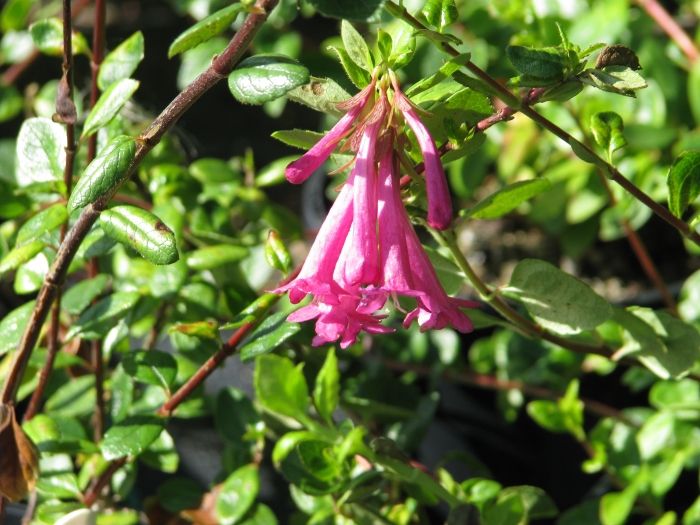Freely-Flowering Vesalea
(Vesalea floribunda)
Freely-Flowering Vesalea (Vesalea floribunda)
/
/

peganum from Henfield, England
CC BY-SA 2.0
Image By:
peganum from Henfield, England
Recorded By:
Copyright:
CC BY-SA 2.0
Copyright Notice:
Photo by: peganum from Henfield, England | License Type: CC BY-SA 2.0 | License URL: https://creativecommons.org/licenses/by-sa/2.0 | Uploader: File Upload Bot (Magnus Manske) | Publisher: Wikimedia Commons | Title: Vesalea_floribunda_(7850722958).jpg | Notes: {{Information |Description=Viburnum lantana |Source= |Date=2006-07-11 |Author=Opioła Jerzy |Permission= |other_versions= }} |










Estimated Native Range
Summary
Vesalea floribunda, commonly known as Freely-Flowering Vesalea, is an evergreen to semi-deciduous shrub native to the understory of montane forests in Central and Southern Mexico. It belongs to the Caprifoliaceae family and is appreciated for its ornamental qualities. This shrub typically grows to 4 meters (13 feet) in both height and width, featuring a dense, rounded form. Its foliage consists of shiny, ovate leaves that provide a lush backdrop for the clusters of tubular, cerise flowers that bloom profusely in the summer and fall, adding vibrant color to the garden. The flowers are particularly showy, reaching up to 5 cm (2 inches) in length.
Freely-Flowering Vesalea is valued for its long blooming period and the striking contrast between its dark foliage and bright flowers. It is often used in sheltered urban gardens, against south-facing walls, and in mixed shrub borders. While it can withstand temperatures down to −10 °C (14 °F), it thrives in a protected spot that mimics its native understory environment. For optimal growth, it should be planted in full sun to part shade, with consistent moisture and well-drained soil. It has been recognized with the Royal Horticultural Society’s Award of Garden Merit, indicating its performance in gardens.CC BY-SA 4.0
Freely-Flowering Vesalea is valued for its long blooming period and the striking contrast between its dark foliage and bright flowers. It is often used in sheltered urban gardens, against south-facing walls, and in mixed shrub borders. While it can withstand temperatures down to −10 °C (14 °F), it thrives in a protected spot that mimics its native understory environment. For optimal growth, it should be planted in full sun to part shade, with consistent moisture and well-drained soil. It has been recognized with the Royal Horticultural Society’s Award of Garden Merit, indicating its performance in gardens.CC BY-SA 4.0
Plant Description
- Plant Type: Shrub
- Height: 6-10 feet
- Width: 6-10 feet
- Growth Rate: Moderate
- Flower Color: Red
- Flowering Season: Summer, Fall
- Leaf Retention: Evergreen
Growth Requirements
- Sun: Full Sun, Part Shade
- Water: Medium
- Drainage: Medium
Common Uses
Bird Garden, Deer Resistant, Hummingbird Garden, Low Maintenance, Salt Tolerant, Showy Flowers
Natural Habitat
Understory of montane forests in Central and Southern Mexico
Other Names
Common Names:
Scientific Names: , Abelia floribunda, Vesalea floribunda, Linnaea floribunda, Vesalea hirsuta, Abelia speciosa, Abelia hirsuta,
GBIF Accepted Name: Vesalea floribunda Mart. & Galeotti